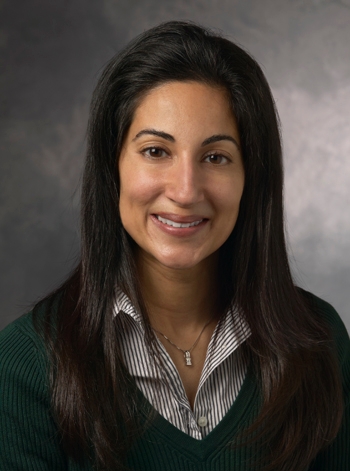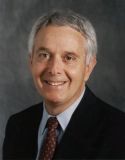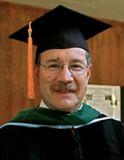Special Feature Items
Current:
Past Featured Items:
ACP Distinguished Teacher/Mentorship Award 11.15.2012
 Dr. Neera Ahuja was named the recipient of the ACP Distinguished Teacher/Mentorship Award. The Award will be presented to her at the Northern California Chapter Meeting in San Francisco at the Parc 55 Wyndham on November 17, 2012.
Dr. Neera Ahuja was named the recipient of the ACP Distinguished Teacher/Mentorship Award. The Award will be presented to her at the Northern California Chapter Meeting in San Francisco at the Parc 55 Wyndham on November 17, 2012.
New Stanford Center to Address Inefficient Health Care Delivery 06.06.2011
ICDDR, Bangladesh and Stanford Collaborate
In September 2010, a senior delegation from ICDDR, B visited Stanford University. The trip built on a Memorandum of Understanding (MoU) between ICDDR,B and Stanford University’s Global Health Program in the School of Medicine. MoU, signed by ICDDR,B’s Executive Director, Dr. Alejandro Cravioto and Senior Associate Dean of Global Health and Director of Global Health Programs in Medicine, Dr. Michele Barry provides a framework to facilitate collaborative global health activities between the two institutions. Stanford’s core strategic group included Dr. Mark Cullen, Dr. Ralph Horwitz, Dr. Eran Bendavid and Dr. Gary Schoolnik. Read More »
Q & A with Arnold Milstein, Director of Stanford’s New Clinical Excellence Research Center
Thursday, July 1, 2010 by Joce Rodriguez
 The process of health care improvement has long been regarded as a business and legal venture on the part of hospitals. More recently researchers have begun to publish outcomes research describing the results of clinical quality improvement efforts in scholarly publications. Taking this evolution to the next step is the goal of The Clinical Excellence Research Center (CERC) recently established in the School of Medicine.
The process of health care improvement has long been regarded as a business and legal venture on the part of hospitals. More recently researchers have begun to publish outcomes research describing the results of clinical quality improvement efforts in scholarly publications. Taking this evolution to the next step is the goal of The Clinical Excellence Research Center (CERC) recently established in the School of Medicine.
The Center will be directed by Arnold Milstein, MD, a national leader in clinical performance improvement. Milstein graduated from Harvard College in economics, received his medical degree from Tufts University, and a master’s degree from UC Berkeley in Health Services Evaluation and Planning. Milstein will start at Stanford in July. In a Q&A session, Dr. Milstein answered questions about his plans for the Center and Stanford becoming a leading institution in the nascent science of clinical performance improvement.
QUESTION: What unique qualities are present at Stanford that attracted you to join the Institution with the goal of improving quality of care?
ANSWER: Many universities have a distinguished engineering school, business school, medical school or arts & sciences faculty, but it is very rare to find globally distinguished faculty in all four categories located within a 10-minute walk. All four will be needed to design the higher value care models to be developed by the Clinical Excellence Research Center.
In addition, Stanford has a wonderful track record in combining faculty across schools to generate societally valuable research. Examples include the Woods Institute, Bio-X and Biodesign.
Most important, Stanford enjoys a distinguished reputation for a collaborative rather than siloed faculty culture.
QUESTION: How do you plan to take advantage of potential partnerships at Stanford to improve health care?
ANSWER: I plan to begin with collaborations among faculty from the Engineering, Business and the Medical schools. Our initial objective will be to formulate and test clinical care innovations that improve health and patients’ experience of their health care while simultaneously lowering annual per capita health care spending. As the Center grows, every school on the campus could potentially be a partner, including the Law and Education schools.
QUESTION: How do you foresee recent health care reform influencing the quality of care at Stanford?
ANSWER: There are two broad elements to the new law. One is reform of health insurance and its extension to many Americans who were unable to afford it. The second component is focused on testing new ways to pay for health care. Both will stimulate interest in the discovery of new methods of health care delivery that generate more health with less money. Such discovery is what the new Clinical Excellence Research Center will pursue through a disciplined process of designs testing, and examining the replicability of high-value innovations in care delivery.
QUESTION: How do you plan to integrate care re-design into medical education?
ANSWER: We will invite medical students, residents, fellows and postdocs at Stanford to participate in innovation discovery and testing. In addition, we will collaborate with Stanford’s medical educators and Stanford Hospital’s quality improvement team to advance the science and practice of clinical performance improvement in pre-clinical and clinical education at Stanford.
The U.S. and other countries need their physicians to not only produce a health care using best practices but also to participate in clinical teams that in their daily health care work formulate and test higher value ways to deliver care. Society needs clinicians to accelerate the rate at which they learn how to generate more health with less money.
QUESTION: Health care practitioners have sometimes been marginal participants in quality improvement research and implementation. What are your plans to improve participation at Stanford?
ANSWER: With the support of SHC and the School of Medicine, we will enable the clinical faculty and the residents to speed their personal academic advancement by publishing the results of their care improvement initiatives and to generate two new societal dividends: building the under-developed science of clinical performance improvement and expanding the basis of clinician professionalism.
The Stanford Internal Medicine Clinic and Stanford Medical Group have been combined into a single clinical entity to enhance patient service, house staff education, and operational efficiency. The new service is called Stanford Internal Medicine (SIM). 06.01.10
Dr. Baldeep Singh, Clinical Professor of Medicine, will head the new service under the aegis of Dr. Mark Cullen, Professor of Medicine, recently recruited from Yale to head the Division of General Medical Disciplines. Singh was recruited last summer as clinical chief of the SMG from UCLA, where he was Associate Program Director and directed one their faculty practices.
“We would like to put a new face on Primary Care at Stanford,” Singh said. “We are doing this to bring our faculty members together in one entity in an effort to strengthen our Internal Medicine division and consolidate the faculty with a renewed sense of mission to provide the best, evidence-based and highest quality care possible.” Twenty-one faculty physicians are part of the combined group.
Meanwhile the residents’ continuity clinics within SIM will be consolidated and enhanced under the program’s longtime director, Dr. Peter Pompei, Associate Professor of Medicine.
“One of the purposes of this consolidation is to give our residents enhanced supervised control and more uniform continuity of care for their patients, whom they will follow for all three years of their residency,” Singh said.
“The combined practice will emphasize continuity of care for those patients whose Primary Care physicians will be supervised house staff. Residents will work closely with attendings, and patients will have access and continuing care from both their resident and the supervising attending,” Singh said. The new MyHealth feature incorporated into the Epic electronic health record will greatly facilitate communication because it allows patients to communicate directly with their physicians, including our residents” Singh said.
The Internal Medicine Clinic had been an important site for many of the Internal Medicine residents’ continuity clinic experience at Stanford.
The SMG was created in the early ‘80’s to provide faculty practice with patient centered care with minimal house staff involvement to patients seeking a Stanford-quality faculty experience that included amenities similar to those offered in a community practice, Singh explained.
“Over the years the two models seemed to grow further apart, creating inefficiencies and inconsistencies that made it more difficult to complete our missions of service, education and research,” he said.
Some elements of the previous practices will be retained by offering separate appointment tracks but will share a common mission, organizational structure and facility for patient care. Patients continuing or starting care with one of the faculty physicians formerly part of the SMG will receive their care in what is being called the “West” Clinic, while former or new IMC patients will receive care with resident involvement at an “East” Clinic with separate appointment contact links.
To contact the new SIM:
East clinic: (650) 723-3300, West clinic (650) 723-6028.
Haiti Donations 02.08.10
The Department of Medicine (DoM) faculty, residents and staff donated more than $21,000 during the two-week  challenge matching fund period. A total of $182,870 donations were made by affiliates of Stanford across campus which exceeded the matching fund amount by Departments within the School of Medicine (SoM), the SoM and the University which totaled $172,500.
challenge matching fund period. A total of $182,870 donations were made by affiliates of Stanford across campus which exceeded the matching fund amount by Departments within the School of Medicine (SoM), the SoM and the University which totaled $172,500.
Your generosity has made a difference in Haiti! The Medical Director of Hôpital Albert Schweitzer (HAS) has written a letter to the Stanford Office of Global Health indicating how your money has been spent. Through donations like yours, HAS has been able to treat over 815 inpatients and an additional 200 which have already been treated and released, perform over 140 operative procedures and accept referrals for revisions of amputations. More »
Peter Rudd, MD 11.12.09
Before  Dr. Peter Rudd officially retired on October 30, 2009, he had worked in the Division of General Medical Disciplines for 32 years. He finished his undergraduate work at Amherst College and his medical school training at Case Western Reserve University before Internal Medicine residency at Stanford. He completed his Clinical Scholars Program fellowship at McGill and served as a faculty member at the University of Chicago before returning to Stanford In 1977.
Dr. Peter Rudd officially retired on October 30, 2009, he had worked in the Division of General Medical Disciplines for 32 years. He finished his undergraduate work at Amherst College and his medical school training at Case Western Reserve University before Internal Medicine residency at Stanford. He completed his Clinical Scholars Program fellowship at McGill and served as a faculty member at the University of Chicago before returning to Stanford In 1977.
Although he was called back to active emeritus duty and will serve for two more years, he offers a brief summary of some of the major themes in his career and especially during his tenure as division chief (1998-2008). More »

